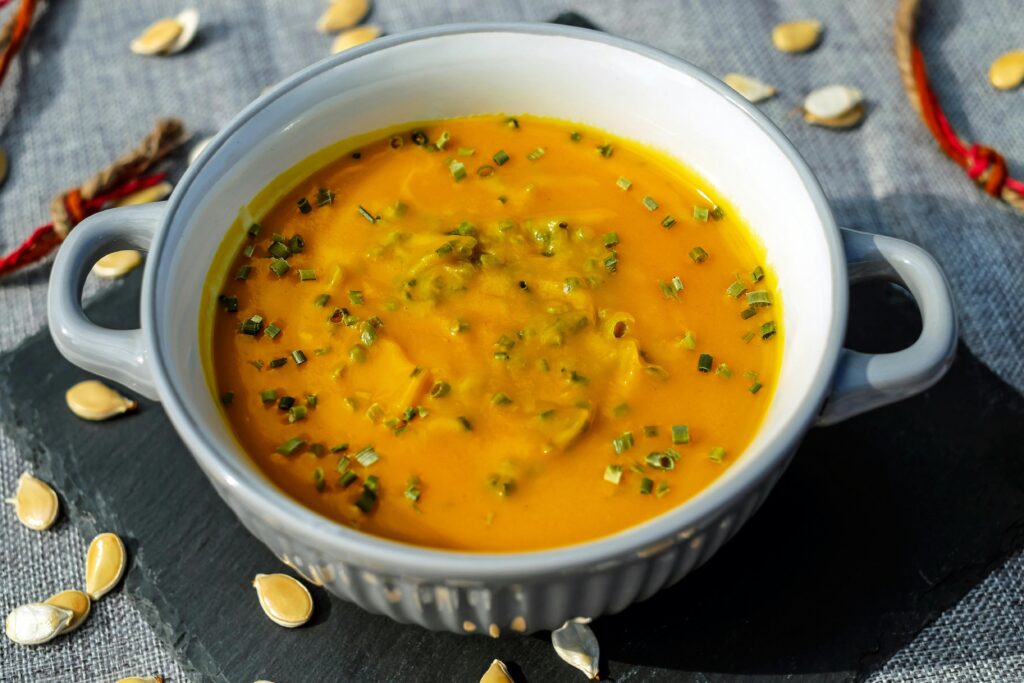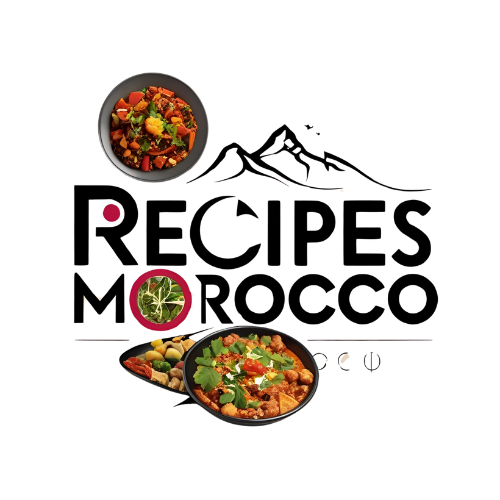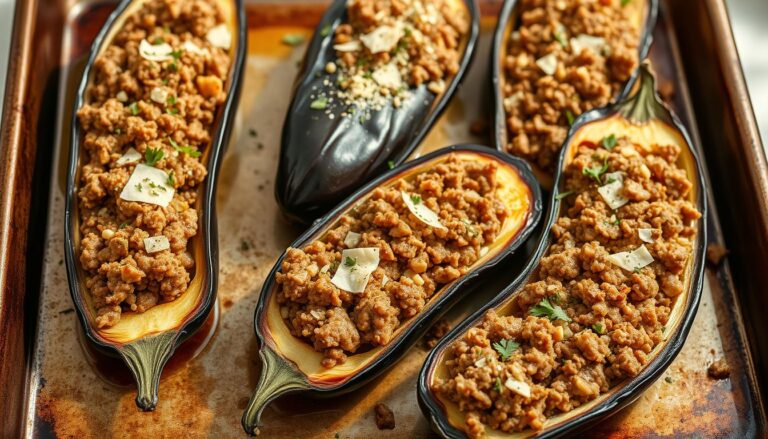Moroccan Harira: A Season-Perfect Soup

More than just a soup, Moroccan Harira is a culinary symbol of Moroccan culture that has deep roots in the history and customs of the country. This robust, savory soup, which originated in the lively streets of Morocco, is a popular dish that works well for all seasons and events. Harira is loved all year round for its flavorful and filling components, and it is traditionally offered to break the fast during Ramadan. With its combination of spices, beans, and grains that represent the nation’s varied agricultural environment and cultural influences, it perfectly captures the spirit of Moroccan cuisine. In order to give readers a thorough grasp of why harira is regarded as a soup for all seasons, this essay will examine its many facets, from its historical significance and traditional preparation techniques to its variants and health advantages.
Historical Importance
Moroccan Harira’s history began in the seventh century and is entwined with the Islamic Ramadan customs. It started out as a straightforward lentil soup but developed over the ages into the flavorful, intricate dish it is today, adding chickpeas, tomatoes, and a variety of spices. Berber, Arab, and Andalusian customs are among the cultures that have influenced the soup, each of which has contributed special ingredients and cooking methods. Harira is more than just a meal; it represents warmth and camaraderie and is frequently served at parties and special events. Families gather together to prepare big quantities of food that can feed a lot of people. Harira’s cultural value is enhanced by its historical context, which makes it a cuisine that celebrates Moroccan identity and unites generations.
Ingredients and How to Make Them
Harira’s elements demonstrate Morocco’s profusion in agriculture. Lentils, chickpeas, tomatoes, and a range of spices like cinnamon, cumin, and coriander are the main ingredients. While the addition of flour and water helps thicken the soup to a substantial consistency, fresh herbs like cilantro and parsley offer a pleasant touch. In order to liberate the fragrant tastes of the spices, Harira is usually prepared by first sautéing onions in olive oil. Lentils and chickpeas are then added, along with water or broth, after tomatoes have been added to create a rich base. A final addition of eggs or lemon juice can improve the flavor and texture of the soup, which simmers until the beans are soft. The care and history that go into Moroccan food are reflected in this methodical preparation procedure, which also creates rich flavors.
Seasonal Differences
Harira is a flexible cuisine that changes with the seasons and the ingredients available in the area. It can be enhanced in the winter with other meats, like lamb or beef, to provide a heartier dinner that feels good in the colder months. Summer versions, on the other hand, might highlight lighter spices and fresher vegetables, highlighting the vivid tastes of the season’s harvest. Additionally, the soup can be altered to suit dietary requirements; for example, vegetarian or vegan versions can be made without any meat at all while still utilizing legumes and spices to create strong flavors. Because of its adaptability, harira is a year-round favorite in Moroccan homes, regardless of the time of year.
Cultural Importance
Food is a major part of social relations in Moroccan culture, and Harira is no exception. It is frequently used as a symbol of warmth and welcome to guests and is linked to hospitality and generosity. Harira is an essential component of the social and spiritual experience of the holy month of Ramadan, as families get together to break their fast. In addition to Ramadan, Harira is used at family get-togethers, festivals, and weddings to strengthen ties and promote a feeling of togetherness. A beloved custom that reflects the significance of food as a tool for celebration and social interaction in Moroccan culture is sharing a bowl of harira.
Advantages of Nutrition
A nutritious addition to any meal, harira is not only tasty but also full of health benefits. A balanced diet must include a variety of plant-based proteins, which are abundant in lentils and chickpeas. While the spices used in Harira, such cumin and coriander, are known for their anti-inflammatory and digestive qualities, the addition of tomatoes provides vitamins A and C. The soup’s high fiber content also helps to maintain digestive health and gives you a feeling of fullness. Harira can therefore be a filling meal choice for anyone who want to savor the rich flavors of Moroccan cuisine while maintaining a healthy lifestyle.
Contemporary Interpretations
Moroccan Harira has become more well-known outside of its traditional setting in recent years, encouraging contemporary chefs and home cooks to try out different versions. While preserving the spirit of the original dish, modern variants frequently include international ingredients like sweet potatoes or quinoa. Some chefs might decide to serve Harira in a disassembled fashion, emphasizing each ingredient independently while keeping the traditional flavors. The way that Harira has changed over time shows how Moroccan food can adapt to new trends while still respecting its rich history. Harira keeps changing as the world grows more interconnected, drawing in new audiences and promoting an understanding of Moroccan food customs.
Worldwide Impact
Harira’s growing appeal in a variety of culinary contexts can be attributed to Moroccan cuisine’s global influence. Harira, which is frequently praised for its authenticity and complexity of flavor, has made its way onto restaurant menus around the world as people’s interest in a wider variety of flavors and different cuisines grows. Moroccan cookery is seeing a rebirth in popularity as foodies look for traditional recipes to make at home. Furthermore, travel and cultural exchanges have made it possible for more people to enjoy sharing Harira in its original setting, which has increased their understanding of the dish and its cultural value. In addition to celebrating Moroccan culinary customs, this international interest promotes a deeper appreciation of the diversity of food cultures around the globe.
Advice for Crafting the Ideal Harira
In order to improve the soup’s flavor and texture, making the ideal Harira at home calls for careful preparation and a few essential pointers. First, the finished dish will be greatly impacted by the use of premium products, particularly fresh herbs and spices. To create a more complex taste profile, sauté the onions until golden brown before adding the spices. A perfect blend of flavors is produced when the soup is simmered gently, allowing the ingredients to mingle together harmoniously. Consider using overnight-soaked dried chickpeas for the best texture, since they will have a creamier consistency than canned ones. Lastly, adding fresh cilantro and a squeeze of lemon juice to the Harira immediately before serving brightens the dish and improves the whole experience.
In conclusion
By combining history, culture, and flavor in one bowl, Moroccan Harira is a meal that perfectly captures the essence of Moroccan cooking. Its rich nutritional profile guarantees that it remains a healthful option for both families and individuals, and its adaptability and variety make it a favorite staple for all seasons. From its humble beginnings as a lentil soup to its contemporary iterations, Harira has remained faithful to its heritage while evolving. This soup is a celebration of history, community, and the delight of sharing food rather than merely a meal. Enjoyed during Ramadan or on a laid-back family evening, harira is a classic dish that brings people together around the table to share Moroccan flavors and make enduring memories.


